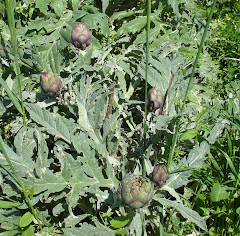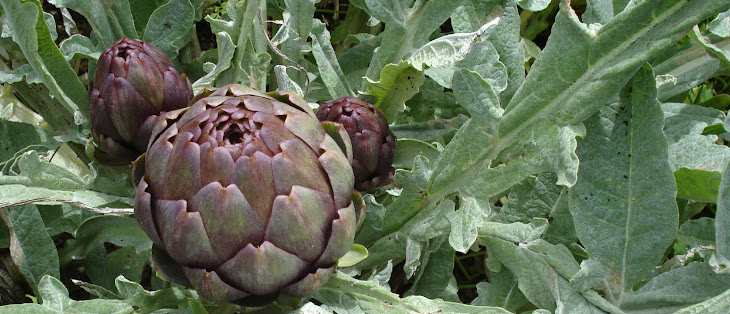Our neighbour brought us a bunch of sweet onions from the Spanish border (not far away, a drive of an hour and a half perhaps and a frequent trip for many people here). These onions are a slightly earlier variety than the local one and so they’re useful to have before the oignons de Lézignan are ready to eat. They don’t need to be widely spaced and the ones that wouldn’t fit in this double row have been very closely spaced to be eaten as spring onions.
Crocuses and rose buds
The crocuses were opening in the sun this morning and the Rosa banksiae has not only leaf buds but flower buds as well.
‘Des arbres et des hommes’
On Friday night the Cercle Occitan organised an very interesting talk by the ethno-botanist Josiane Ubaud about the social and cultural reasons for the planting of different species of trees in the Languedoc region. She divides the trees into different groups. Social markers are those trees which were planted to show the social status of the owner of a property and foremost among these are the cedar, planted around prosperous winemaking domains from the eighteenth century onwards, and the palm, planted at seaside resorts to attract tourists and more recently in private gardens. Cultural, sacred markers are those which have been considered sacred since pre-Christian, Celtic times. Cypress trees are often planted at the entrances to cemeteries and because of this they have often been associated with death, but in fact are markers of passage, and so are planted at crossroads too. Their beautiful curving shapes, especially when they are blown by the wind, have been described by the Occitan poet Max Rouquette as flambadas sacradas, sacred flames. The bay tree (laurier noble), and specifically the female tree which bears berries, has been considered sacred since the time of the ancient Greeks and has give us the French word baccalauréat (berry of the laurier). The olive tree has also been seen as sacred throughout the ages of Mediterranean civilisation, because of its longevity and its ability to rejuvenate when apparently it has been killed. In the Languedoc, though, it has too much of an agricultural history to have been planted much in sacred places. Finally, the European hackberry tree (Celtis australis, micocoulier in French) has an Occitan name which demonstrates its sacredness: fanabreguièr which comes from the Latin word for temple (fanum) and the Celtic word for sacred wood (brogilum). We don’t see these trees often in this part of the Languedoc, as they are more likely to be planted to the east of us, near Montpellier. As well as traditionally being sacred, they are useful trees too, because they are deciduous and so give shade in summer but lose their leaves in winter to let the light through.
Above are some of my photos of some of the trees mentioned in Josiane Ubaud’s lecture: left, an olive tree (of course!), centre, a palm in the garden of a substantial house in Roujan, definitely a marker of social status, and right, a line of cypress trees planted on the boundary of a piece of land.
‘Un jardin sec n’est pas un jardin pauvre’
A dry garden is not a poor garden. This was repeated a couple of times by Josiane Ubaud who feels very strongly, as I do, that in this region we should not try to reproduce the lush green gardens of wetter climates, with their lawns and colourful summer flowers. This is something we have tried to follow when growing decorative plants in our garden – we try to plant only those varieties that can survive without watering once they are established.
We're hoping that Mme Ubaud will return next year to give the second part of her lecture - about the useful, decorative and food-providing trees. If you read French, her website is very interesting.









































